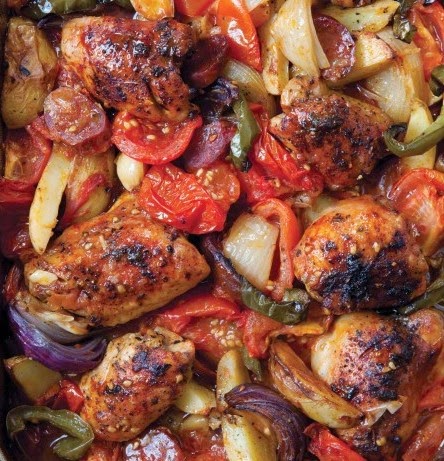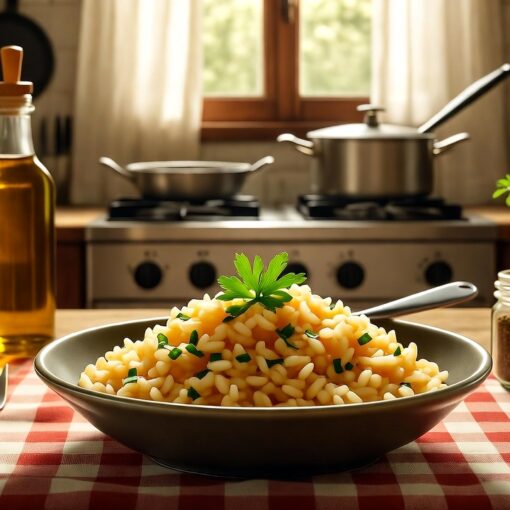A Collection of 7 Tomato-Based Pasta Sauces
From Naples to New York — each sauce with history, flavor, and the perfect pasta match
Tomatoes transformed Italian cuisine in the 18th century. These seven iconic sauces showcase their versatility — from minimalist Marinara to creamy Vodka. Each includes a short origin story, a fun fact, and the ideal pasta pairing.
One fruit, seven masterpieces — tomato sauces for every craving.
Classic Marinara
Origin: Naples, 16th century. Sailors (“marinai”) needed a shelf-stable sauce — tomatoes, garlic, and oil were perfect. No meat, no fuss.
Fun Fact: Authentic Marinara has no onions in Naples — adding them is considered “alla Napoletana” elsewhere!
Ingredients
- 800 g canned whole peeled tomatoes (San Marzano preferred)
- 5 tbsp extra virgin olive oil
- 4 garlic cloves, thinly sliced
- 6–8 fresh basil leaves
- Salt & black pepper
Method
Best Pasta: Spaghetti or Bucatini — long strands twirl beautifully in the silky, light sauce.
Pro Tip: Use San Marzano tomatoes for authentic sweetness. No cheese needed — basil is the star.
Photo credit: Neapolitan tradition
Penne all’Arrabbiata
Origin: Lazio (Rome), mid-20th century. “Arrabbiata” means “angry” — the chilli makes your face red with heat!
Fun Fact: In Rome, it’s often made without garlic — just chilli, tomato, and parsley. Garlic is optional!
Ingredients
- 800 g canned tomatoes
- 4 tbsp olive oil
- 3–5 dried red chillies or 1 tsp chilli flakes
- 4 garlic cloves, sliced (optional)
- 1 tsp sugar (optional)
- Handful fresh parsley
- Salt
Method
Best Pasta: Penne Rigate — ridges trap the fiery sauce in every bite.
Heat Level: Make it as spicy as you dare — true Romans go hot!
Photo credit: Roman fire
Spaghetti alla Puttanesca
Origin: Naples or Lazio, 1950s. Legend says it was a quick meal for “ladies of the night” — made from pantry staples in minutes.
Fun Fact: “Puttanesca” literally means “in the style of the prostitute” — the bold, salty flavors were said to lure customers!
Ingredients
- 800 g tomatoes
- 4 tbsp olive oil
- 4 anchovy fillets
- 3 garlic cloves
- 80 g black olives, pitted & halved
- 2 tbsp capers, rinsed
- 1 tsp chilli flakes
- 1 tbsp fresh oregano or parsley
Method
Best Pasta: Spaghetti — bold, briny flavors cling to thin strands.
Pantry Hero: Ready in 15 min with store-cupboard staples.
Photo credit: Naples backstreets
Bucatini all’Amatriciana
Origin: Amatrice, Lazio. Originally “gricia” (pork + cheese), tomatoes were added in the 1800s. Now a protected recipe.
Fun Fact: After the 2016 earthquake, Amatriciana became a symbol of solidarity — restaurants worldwide donated proceeds to rebuild Amatrice.
Ingredients
- 800 g tomatoes
- 150 g guanciale (or pancetta)
- 80 g Pecorino Romano, grated
- 1 tsp chilli flakes
- 3 tbsp dry white wine
Method
Best Pasta: Bucatini — thick spaghetti with a hole sucks up the sauce like a straw.
Authenticity: True Amatriciana uses guanciale, no onion, no garlic.
Photo credit: Amatrice, Lazio
Pasta alla Norma
Origin: Catania, Sicily, 19th century. Named after Bellini’s opera “Norma” — playwright Nino Martoglio exclaimed, “This is a real Norma!”
Fun Fact: Eggplant was once called “mela insana” (mad apple) in Italy — thought to cause insanity!
Ingredients
- 800 g fresh tomatoes or canned
- 1 medium eggplant, cubed
- 4 tbsp olive oil
- 3 garlic cloves
- Handful fresh basil
- 100 g ricotta salata, shaved
- Salt & chilli
Method
Best Pasta: Rigatoni or Maccheroni — tubes hold eggplant chunks and sauce.
Sicilian Soul: A dramatic vegetarian triumph — ricotta salata is non-negotiable.
Photo credit: Catania, Sicily
Classic Tomato Bolognese (Ragù)
Origin: Bologna, Emilia-Romagna, 18th century. Officially registered in 1982 by the Italian Academy of Cuisine — no garlic, no herbs, just slow love.
Fun Fact: In Italy, it’s called “ragù alla bolognese” and never “spaghetti bolognese” — that’s a British invention!
Ingredients
- 400 g canned tomatoes
- 200 g beef mince + 100 g pork mince
- 1 carrot, finely diced
- 1 celery stalk, finely diced
- 1 onion, finely diced
- 100 ml whole milk
- 100 ml white wine
- 2 tbsp olive oil
- Salt & pepper
Method
Best Pasta: Tagliatelle or Pappardelle — wide ribbons cradle the rich, meaty ragù.
Slow & Low: The longer it cooks, the silkier it gets. Freeze leftovers.
Photo credit: Bologna, Emilia-Romagna
Penne alla Vodka
Origin: Disputed — Italy or NYC, 1970s–80s. Likely invented to sell vodka in Italy or by Italian-Americans. The alcohol enhances tomato flavor and helps emulsify cream.
Fun Fact: The vodka is mostly cooked off — safe for kids! It’s about chemistry, not booze.
Ingredients
- 800 g canned tomatoes
- 150 ml heavy cream
- 80 ml vodka
- 1 small onion, finely chopped
- 2 tbsp butter
- 1 tsp chilli flakes
- 50 g Parmigiano, grated
Method
Best Pasta: Penne or Rigatoni — creamy sauce pools in the tubes.
NYC-Italian: A 1980s icon — silky, rosy, and universally loved.
Photo credit: Italian-American innovation




